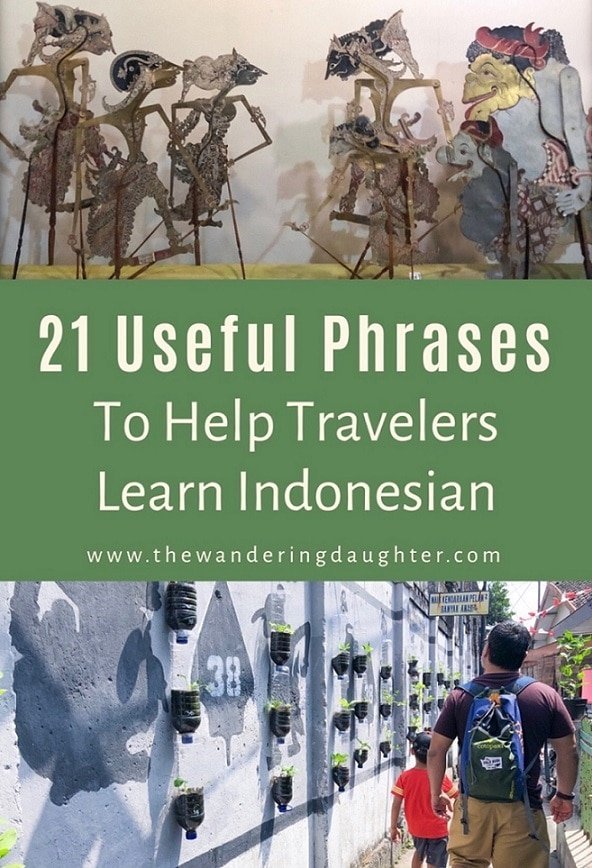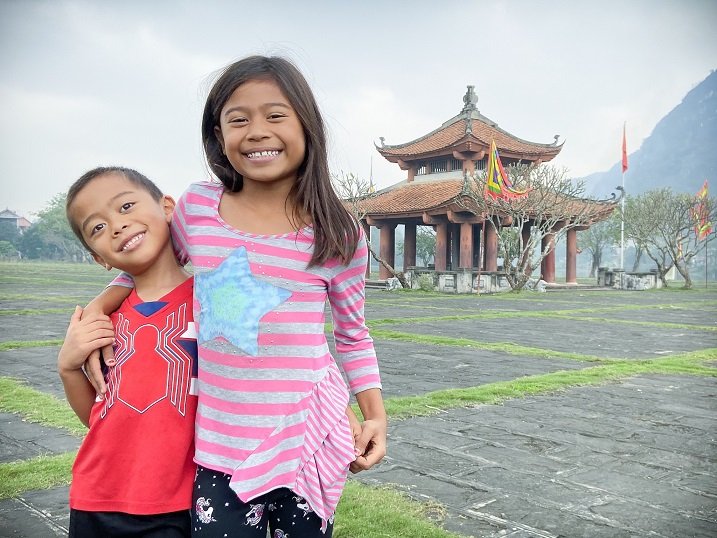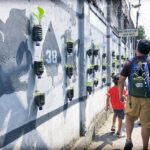21 Useful Basic Indonesian Phrases For Travel

Of the many places we've visited as a family, Indonesia has definitely been one of my happy places. The culture, natural landscapes, and lively cities makes Indonesia a uniquely fun destination for families. And if you're armed with a list of basic Indonesian phrases, that will certainly open many doors to some memorable experiences.
Indonesia has long held the interest of many travelers throughout the years. The country’s most popular island among travelers, Bali, is just a speck among the over 17,000 islands that make up the Indonesian archipelago. This collection of islands, spanning across the equator between mainland Asia and Australia, holds over 264 million people.
And within these islands, there are over 300 ethnic groups all speaking their own language. Each Indonesian speaks at least two languages: the language of their ethnic group, and Bahasa Indonesia, the national language of Indonesia.
Traveling throughout Indonesia’s many islands is a must for any visitor to Indonesia. And the best way to make the most of your travels is to learn some basic Indonesian phrases.
This post was updated on May 10, 2022.
This post may contain affiliate links. That means I may receive a small commission if you click on the link and purchase something. But don't worry, this will not result in any extra costs to you.
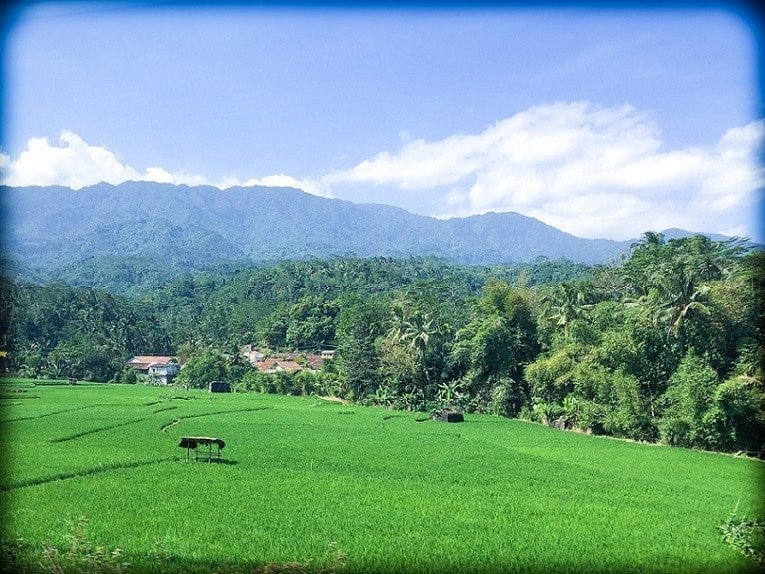
Tracing the roots of basic Indonesian phrases
For families who love to learn while they travel, learning the language of the country you're visiting is a great way to gain a deeper understanding of the local culture. And Indonesian is no exception.
Bahasa Indonesia, as the language is officially called, was created in the 1920’s as part of the Indonesian nationalist movement. At the time, under Dutch rule, many Indonesians were not allowed to learn Dutch, as the Dutch thought this would make Indonesians start viewing themselves as equals to the Dutch.
A unifying language amidst a diverse group of ethnic groups
So, in order for the various ethnic groups to communicate with one another, the Indonesian people adopted a form of Malay that was already widely used throughout the region for commerce and trade. When nationalism spread across the archipelago, this form of Malay became the precursor to the language of Indonesia.
The book, Brief History of Indonesia, goes more in depth about the development of the Indonesian language. Buy it here on Amazon:
Cultural influences on basic Indonesian phrases and words
While much of the language of Indonesia stems from Malay, Bahasa Indonesia also borrows words from the other cultures that have passed through the archipelago. Many of the ethnic groups around Indonesia have contributed words to the language of Indonesia.
Indonesian basic words like candi (temple), gadis (girl), and juara (winner) stem from Javanese, Minangkabau, and Sundanese languages, respectively.
Additionally, outside cultures have influenced the language of Indonesia. Indian, Chinese, and Arab traders brought words like kota (Tamil for city), mie (Hokkien for noodles), and kabar (Arabic for news).
And from the European cultures, the Portuguese brought words like keju (cheese), meja (table), and sepatu (shoes), while the Dutch brought buku (book), gang (alley), and kamar (room). More recently, English words like bisnis (business) and elektronik (electronic) have been adopted as part of the language of Indonesia.
Budgeting for a trip to Indonesia? Here are tips for preparing your Indonesian travel budget.
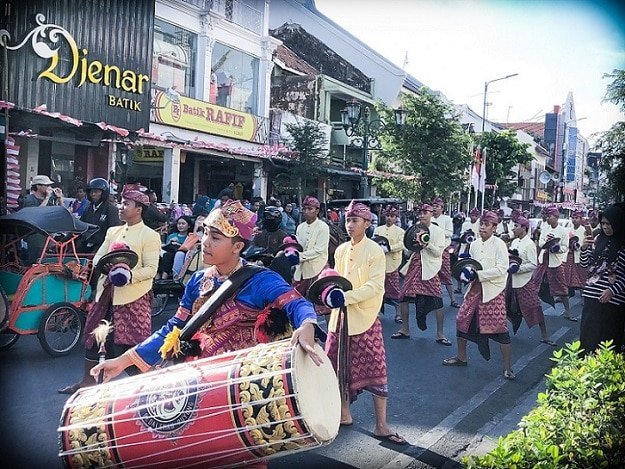
Best ways to learn some basic Indonesian phrases
When it comes to trying to learning some Indonesian basic words, the best way is to take a course. We’re currently taking Indonesian language courses at a place called Wisma Bahasa, and it is helping us tremendously in being able to communicate.
Self-learning courses with Indonesian basic words and phrases
If you aren’t able to take in-person courses, the next best thing is to do an audio based course. We like this one from Pimsleur.
Pimsleur Indonesian Conversational Course
Alternatively, books that teach Indonesian basic words are also great, but just make sure they have an audio component too, so that you can hear the pronunciation accurately. You can buy this one on Amazon:
Indonesian for Beginners: Learning Conversational Indonesian
Don't be afraid to dive in
Once in Indonesia, the best way to learn Indonesian is to jump right in to speaking the language. Knowing a few Indonesian basic words and phrases goes a long way in helping Indonesians open up to you as a traveler. And making some effort into learning the language may even garner you some respect and appreciation.
Duolingo is a good resource to use for learning some basic Indonesian phrases. They have an Indonesian course on their app. As a last resort, you can always fall back to Google Translate.
A note on grammar
Indonesian is a relatively simple language to learn. Unlike the Romance languages, there are no verb conjugations, and there are no masculine or feminine forms of words.
And unlike Chinese, Korean, or other east Asian languages, the meaning of a word doesn’t often change drastically when you pronounce it in a different way. All this is to say that even if you have a horribly American or European Indonesian accent, you should still be able to be understood when speaking Indonesian.
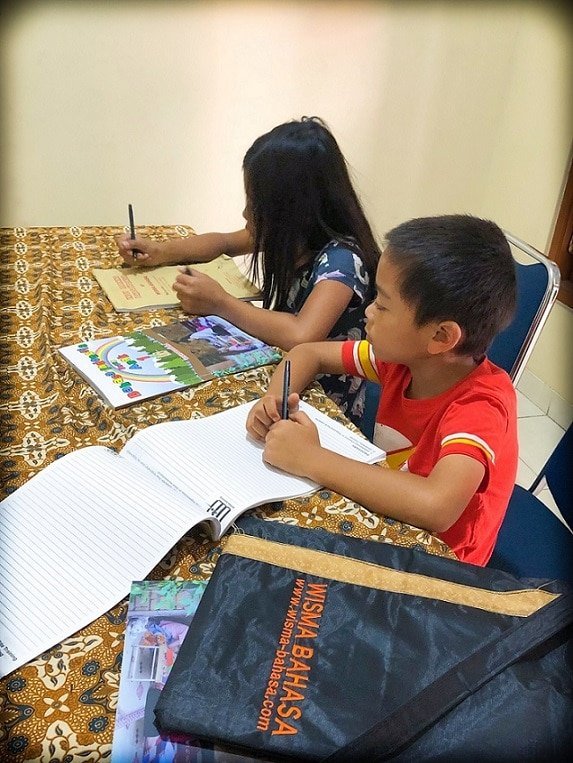
Tips on pronouncing basic Indonesian phrases
A few notes about pronunciation when you're just starting to learn some Indonesian basic words. For vowels, Indonesians pronounces a like in "father" rather than in "man". The e is pronounced like in "bed", and the i is pronounced like the "e" in "me". The letter o is pronounced as a mix of the ending sounds in the words "saw" and "toe", and the letter u is pronounced like the "oo" sounds in "loot" or "boot".
There is also an ai sound that is sometimes pronounced like the end of the word, "pie," or sometimes pronounced like the end of the word, "day." And there is an au sound that is similar to the word "how." Keep these sounds in mind as you practice the pronunciation of these Indonesian phrases.
In terms of consonants, most are pronounced how they are in English. However, the letter r is rolled, like in Spanish. The letter c is always a hard sound like "k". And with words that end in k, like tidak, bapak, or masak, they use a glottal stop, which means you only just start to pronounce the "k" sound, and then stop. In the pronunciation notes below, I'll put (k) to remind you of this.
The final note in terms of pronunciation is where to put the stress when you're pronouncing a word. I would have loved to have added audio to this post, but it proved too difficult to do with the equipment I had. So in the Indonesian phrases below, I’ve made in bold the parts of the word where you place the stress.
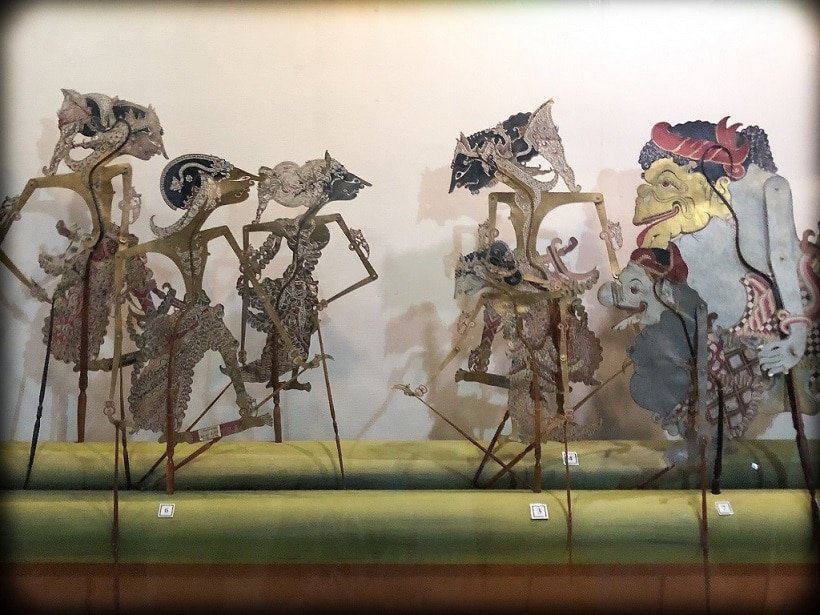
Useful basic Indonesian phrases to help travelers
While I’m not a linguist, I do appreciate how learning a local language can help make your travel experiences more interesting. It also helps us live more like locals when we travel.
For travelers, there are a few Indonesian basic words and phrases that will come in handy as you spend time in the country. As you travel through Indonesia, try and use these phrases to help you learn Indonesian and experience the culture.
1. Hello and until we meet again
Halo ( "ha-low" ) = hello
Sampai jumpa lagi ("sum-pie joom-pa la-ghee") = until we meet again
“Hello” and “until we meet again” are useful Indonesian phrases to know. You’ll use them every time you meet someone new. If you’re not planning to see the person again, you can simply say “bye” as you leave.
2. Good morning, good afternoon, good evening
For greeting in the morning:
Selamat pagi ("se-la-mat pa-gee") = good morning
For greeting in the afternoon:
Selamat siang ("se-la-mat see-yang") = good early afternoon
Selamat sore ("se-la-mat sow-reh") = good late afternoon
For greeting in the evening:
Selamat malam ("se-la-mat ma-lam") = good evening
When you learn Indonesian, one of the first things you learn is how to say “good morning,” “good afternoon,” or “good evening.” When it comes to saying “good afternoon”, Indonesians make a distinction between early afternoon (siang) and late afternoon (sore). Early afternoon is usually between 11 am to 3 pm, and late afternoon is from 3 pm until sunset.
3. Thank you and no thank you
Terima kasih ("te-ree-ma ka-see") = thank you
Tidak, terima kasih ("tee-da(k), te-ree-ma ka-see") = no thank you
Two other basic Indonesian phrases to know is “thank you” and “no thank you.” When you say, “thank you” to someone, they will usually reply with sama-sama, which means “same to you.” Being able to say “no thank you” comes in handy when you’re trying to fend off pushy taxi drivers at the airport, or hawkers on the beaches.
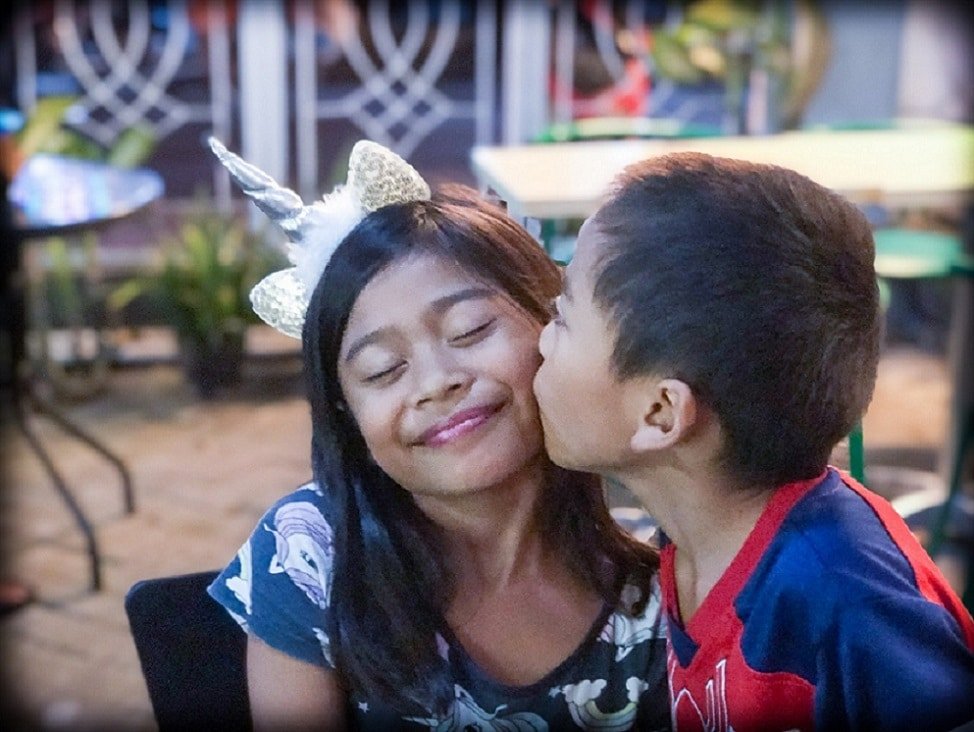
4. I’m sorry and excuse me
Maaf ("ma-af") = I'm sorry
Permisi ("per-mee-see") = excuse me
One of the most helpful Indonesian phrases to know is how to say “I’m sorry” or “excuse me”. You can say “sorry” when you bump into people, knock things over, or just a general way of saying “I’m sorry.” “Excuse me” can be used when you’re trying to get some’s attention or squeezing by someone.
5. How are you? and I’m fine
Apa kabar ("ah-pa ka-bar") = how are you?
Baik saja ("bike sa-ja") = I'm fine
Most basic conversations when you learn Indonesian include how to say “how are you” and “I’m fine.” These are useful Indonesian phrases to know, as you’ll most likely say this to taxi drivers, store owners, waiters, and basically anyone that you interact with.
6. Yes and no
Ya ("ya") = yes
Tidak ("tee-da(k)") = no
Like English, the Indonesian word for “yes” is ya. For “no,” the word is generally tidak. However, if you’re negating a noun, then you use the word, bukan. As an example, “that book is not good” is buku itu tidak bagus. But “that book is not mine” would be buku itu bukan punya saya.
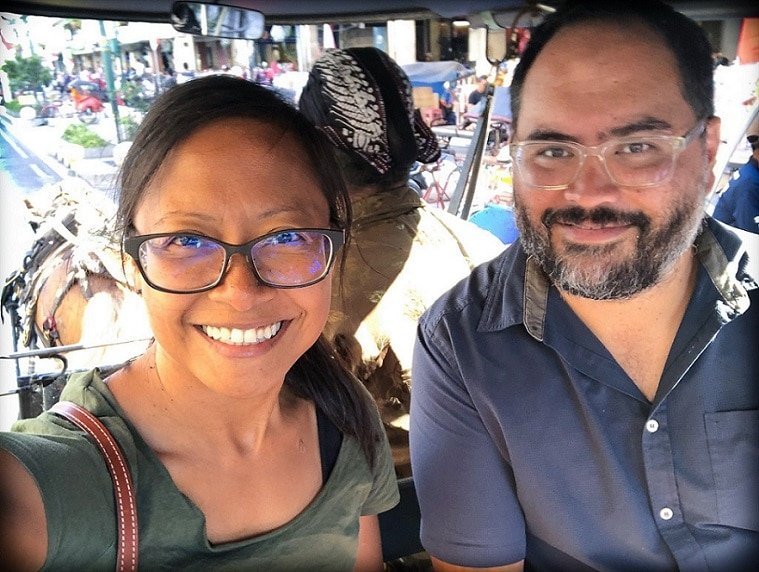
7. Me, you, you all, he/she, they, and we
Saya ("sa-ya") = me
Anda ("an-da") = you
Kalian ("ka-lee-yan") = you all
Dia ("dee-ya") = he/she
Mereka ("me-re-ka") = they
Kami ("ka-mee") = we, excluding you
Kita ("kee-ta") = we, including you
As I mentioned before, unlike the Romance languages, pronouns won’t change the conjugation of a verb. The verb remains the same whether you put “me/I,” “you,” “she,” or “we” in front of it.
One thing to note when it comes to “we” is that kami is used when you’re referring to “we” without the person that you’re speaking to. Alternatively, kita is used when referring to “we” including the person that you’re speaking to.
8. Mister, Misses, Miss
Bapak ("ba-pa(k)") = mister or sir
Ibu ("ee-bu") = misses or ma'am
Mas ("mas") = young mister or sir
Mbak ("m-ba(k)") = miss
In some respects, the language of Indonesia relies heavily on formalities. This stems from the culture of Indonesia, and the emphasis placed on showing respect to others, especially your elders.
When possible, use bapak (pak for short) or ibu (bu for short) when talking with adults to show respect. Mas and mbak are used when speaking to someone who is younger than you.
9. What is this and what is that
Apa ini? ("a-pa ee-nee") = what is this?
Apa itu? ("a-pa ee-too") = what is that?
You can ask “what is this” or “what is that” when you’re at a restaurant, at the market, or even when you’re shopping at a store.
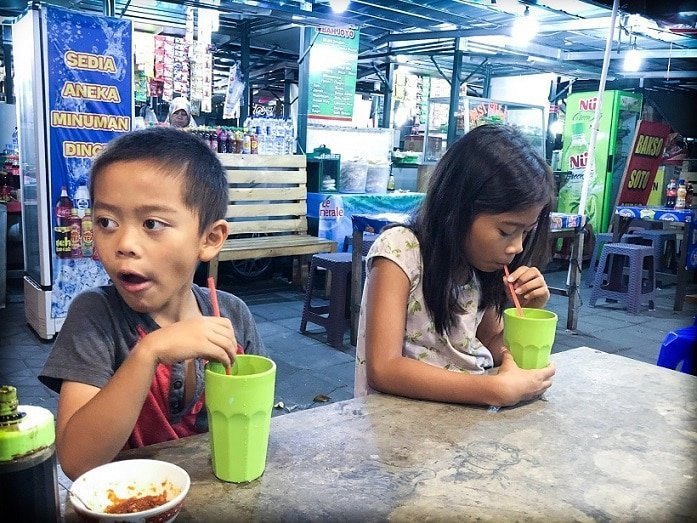
10. How much does this cost?
Berapa harga ini? ("ber-a-pa har-ga ee-nee") = how much does this cost?
Additionally, you can ask “how much does this cost” when you want to know the price of something. Indonesia uses the rupiah as currency, and will generally price things in the thousands.
11. Where is …?
Di mana ...? ("dee ma-na") = where is ...?
If you’re asking for directions, start with di mana, and then add the location that you’re wanting to go. For example, if you’re asking “where is the airport?” you would ask, di mana bandara? Alternatively, if you’re asking where an object is, such as a book, a pencil, or a phone, you can also use di mana, followed by the object.
12. Here and there
Di sini ("dee see-ne") = here
Di sana ("dee sa-na") = ther
“Here” and “there” are two Indonesian phrases that will come in handy at restaurants (when you want to pick a table to sit) or when giving directions to a taxi driver.
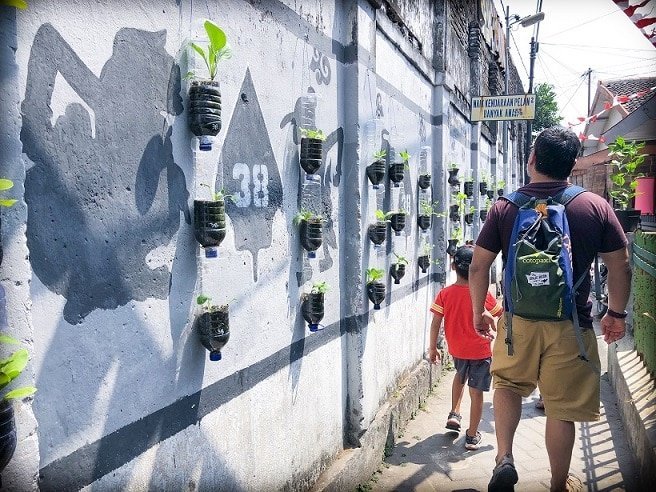
13. I want … and I don’t want …
Saya mau ("sa-ya ma-oo") = I want
Saya tidak mau ("sa-ya tee-da(k) ma-oo") = I don't want
If you’re still beginning to learn Indonesian, knowing how to say “I want XYZ thing” or “I don’t want XYZ thing” is extremely helpful. You can use “I want” when you’re ordering food, or when you’re looking for something at the store.
14. Do you have …?
Ada ("a-da") = is there? (though can be used to ask, do you have?)
Alternatively, you can also ask “do you have XYZ thing?” at restaurants and at stores. If the person answers in the affirmative, then you can follow up with “I want …”
15. Can I …? and may I …?
Bisa saya ... ("bi-sa sa-ya") = can I ...?
Boleh saya ... ("bo-ley sa-ya") = may I ...?
Just like in English, there is a difference between “can I” and “may I”. “Can I …?” implies being able to physically do something. On the other hand, “may I …?” refers to being allowed to do something.
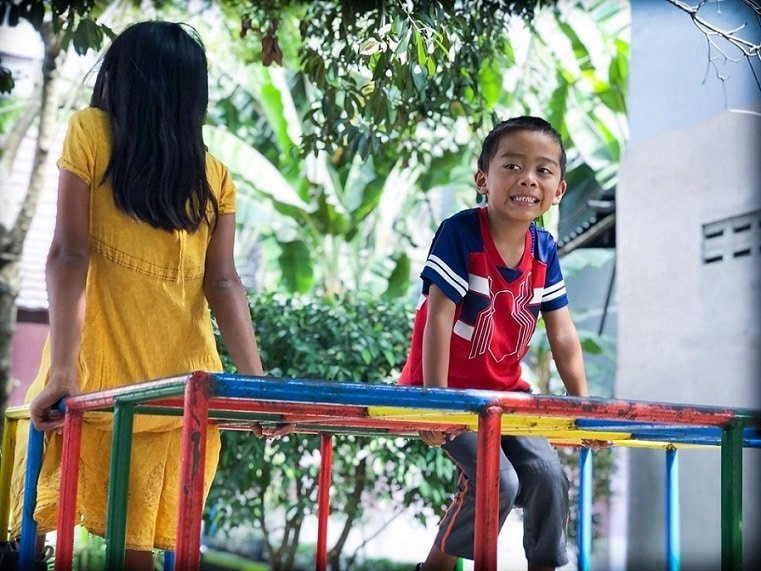
16. Adults and children
Dewasa ("de-wa-sa") = adults
Anak-anak ("a-na(k) a-na(k)")
At museums or attractions, you’ll often see different prices for adults and children. Knowing the words for “adults” and “children” will come in handy when buying tickets.
17. Counting from one to ten
Satu ("sa-too") = one
Dua ("doo-a") = two
Tiga ("tee-ga") = three
Empat ("em-pat") = four
Lima ("lee-ma") = five
Enam ("uh-nam") = six
Tujuh ("too-joo") = seven
Delapan ("de-la-pan") = eight
Sembilan ("sem-bee-lan") = nine
Sepuluh ("se-poo-loo") = ten
Understanding the words for simple numbers will come in handy when ordering food, purchasing tickets, or even telling time.
18. For here and to go
Di tempat ("dee tem-pat") = for here (literally means in place)
Di bungkus ("dee-boong-koos") = to go (literally means packaged)
At restaurants, waiters may ask you whether you want the food “for here” or “to go”. Many Indonesians like to get takeout rather than cook at home, especially if they’re working long hours at the office.
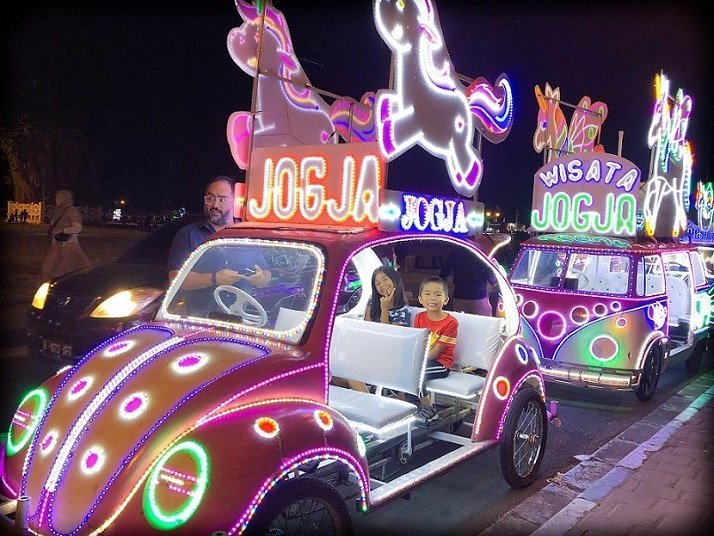
19. It’s good and it’s delicious
Bagus ("ba-goos") = good
Enak ("e-nak") = delicious
There are two ways of saying “good.” When it comes to most things, you can use bagus. For example, “this batik is good” or “this house is good” would translate to batik ini bagus and rumah ini bagus.
But “this food is good” will always translate to makanan ini enak. Additionally, if you’re referring to how you’re feeling, you would use baik instead of bagus.
20. That’s all or done
Sudah ("soo-dah") = done
When you’re finished with something, you can say, sudah. Additionally, vendors will say, sudah when they have run out of something. They may also say kosong, which means “empty.”
21. I don’t understand and do you speak English?
Saya tidak mengerti ("sa-ya tee-da(k) meng-er-tee") = I don't understand
Bisa bicara Bahasa Inggris? ("bee-sa bee-cha-ra ba-ha-sa eeng-gris") = do you speak English?
In my opinion, one of the most useful Indonesian phrases to know, especially when you’re still starting to learn Indonesian is “I don’t understand.” You can follow this up by asking, “can you speak English?” If the person you’re talking to doesn’t know how to speak English, they will most likely try to find someone who does.
Ready to go explore Indonesian? Take a look at my Indonesian posts here.
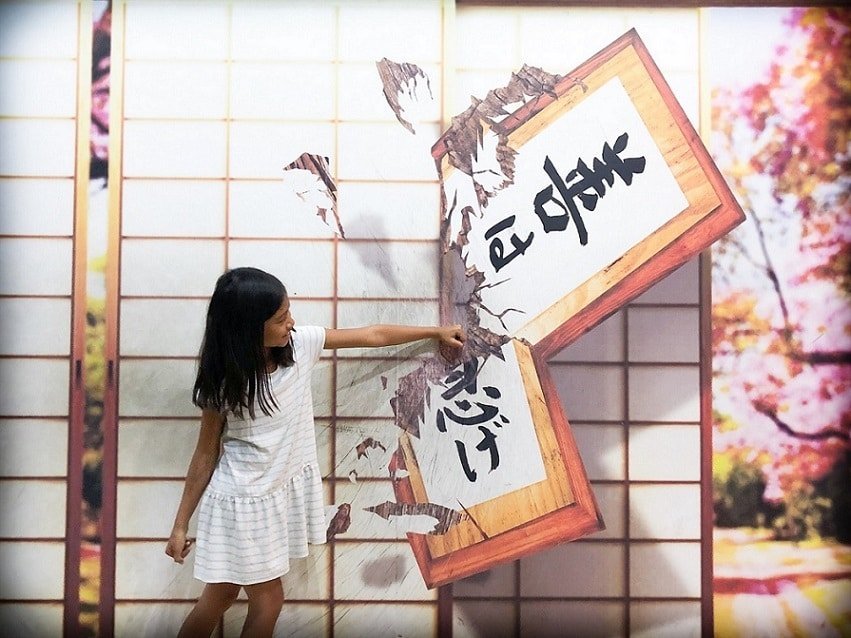
Making a commitment to learn some basic Indonesian phrases
As a traveler, it’s important to be respectful of the culture that you’re visiting. And one way to show respect is to learn a few phrases in the language of that country. Even if you’re just beginning to learn Indonesian, knowing one or two phrases can help you navigate through many situations while traveling in Indonesian.
These Indonesian phrases are just a starting point to introduce you to the language of Indonesia. I’m hoping that as you travel throughout this diverse and beautiful country, you’ll pick up many more phrases that will be useful in your travels.
Have you had a chance to learn Indonesian during your travels? What are some of your favorite Indonesian phrases?
Are you visiting Indonesia as part of a bigger family travel adventure? Use my ebook, Hey Kids, Let’s Go Travel! as a resource for tools, advice, and action steps for planning your trip.


